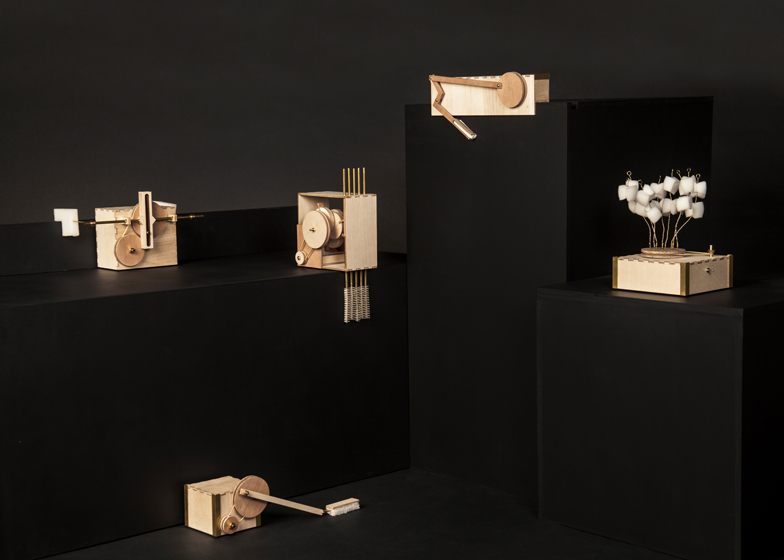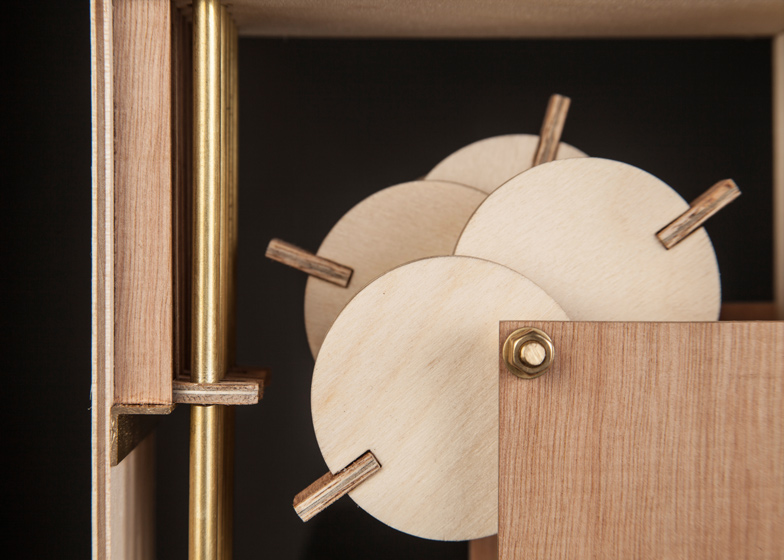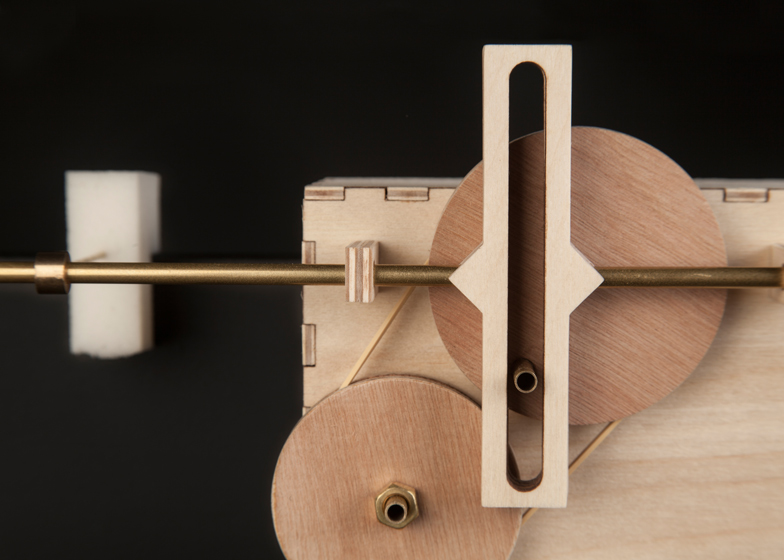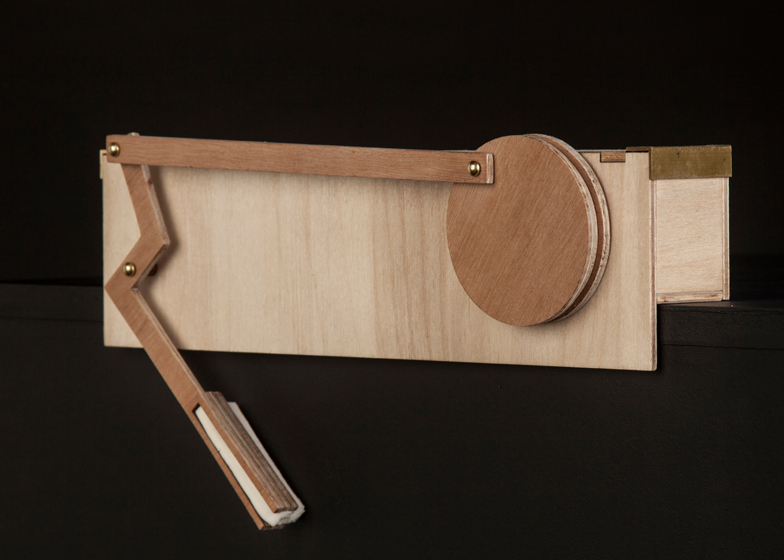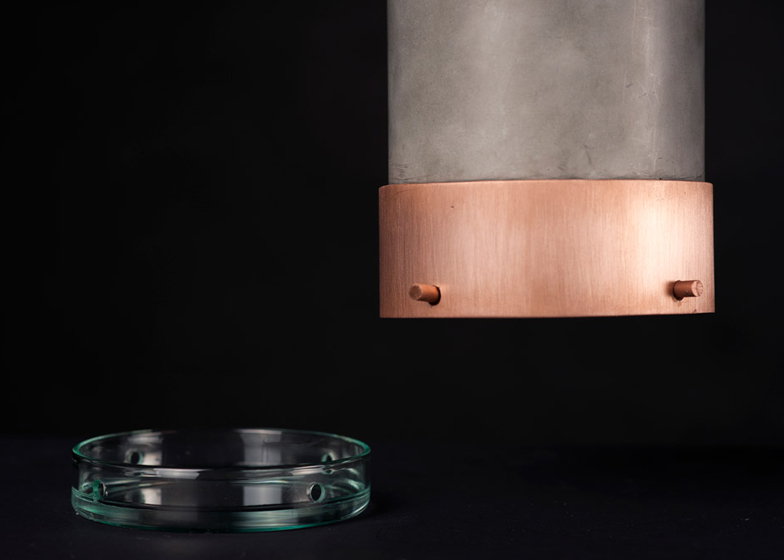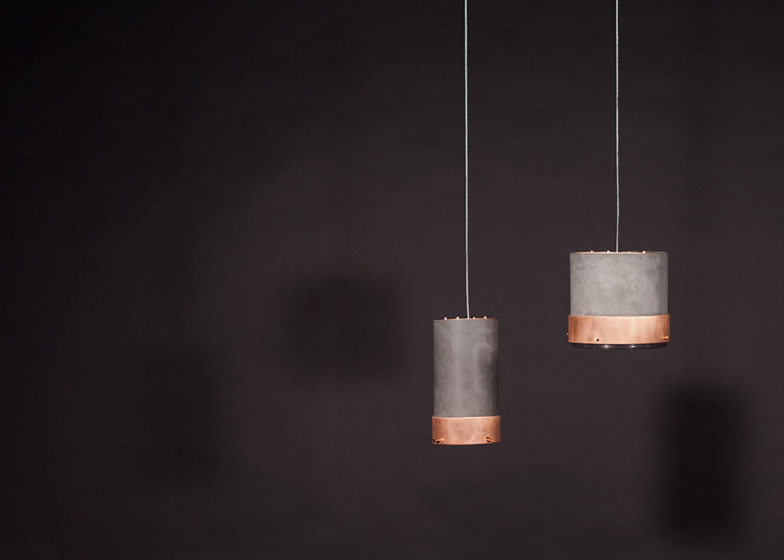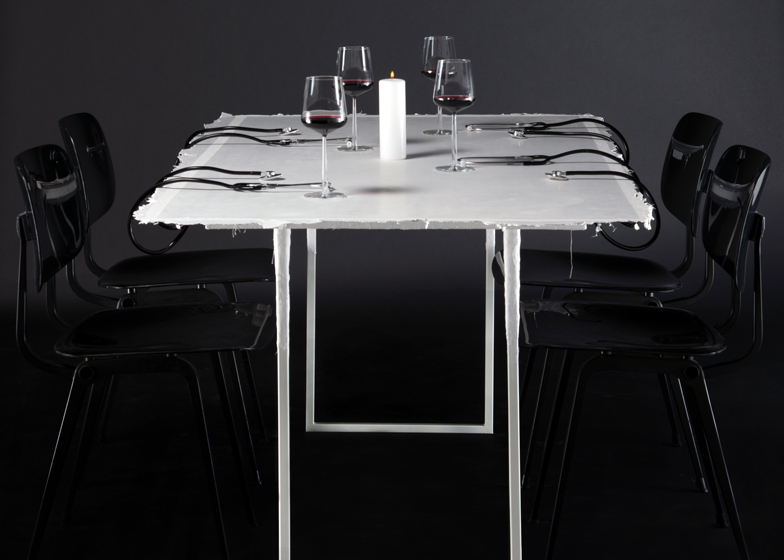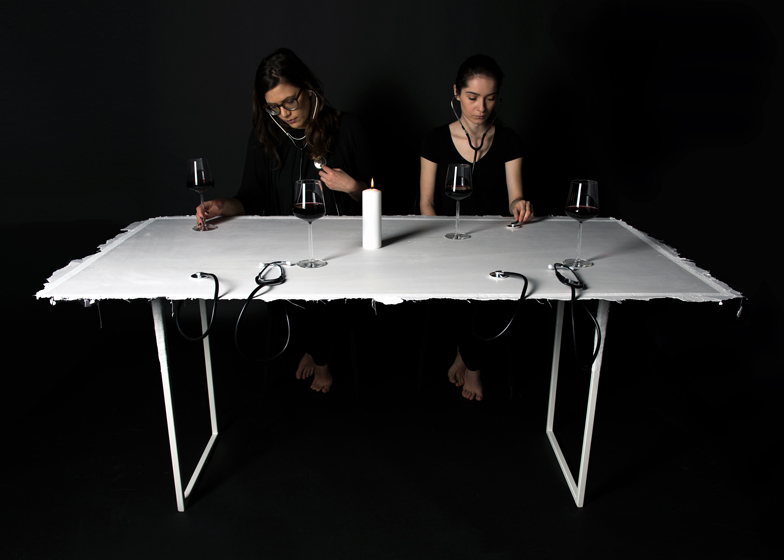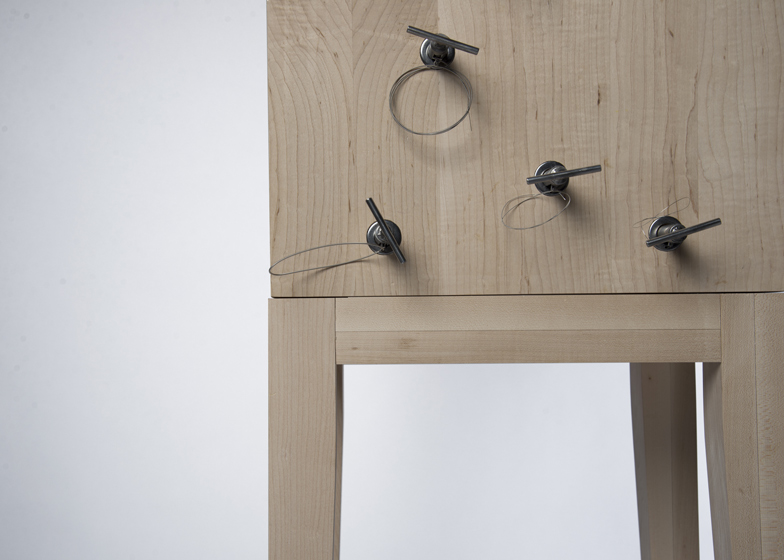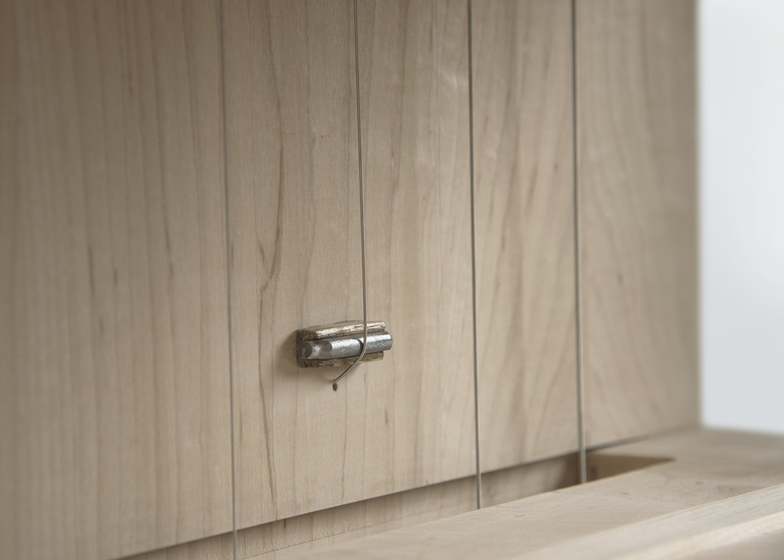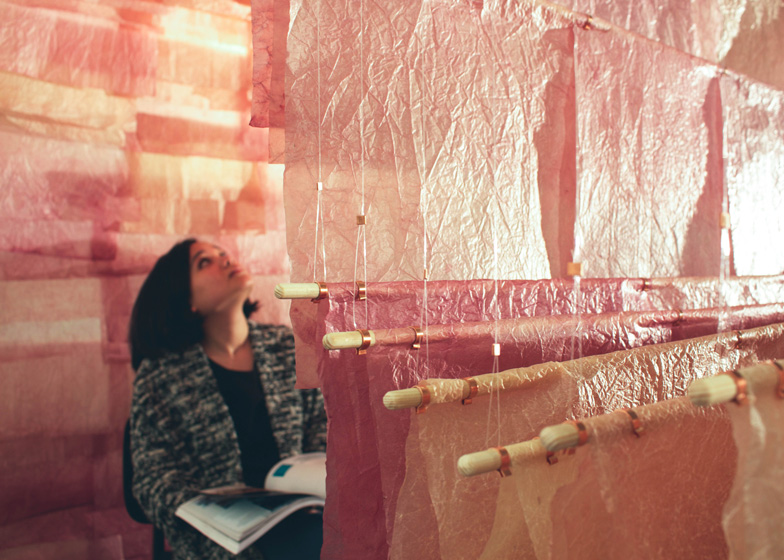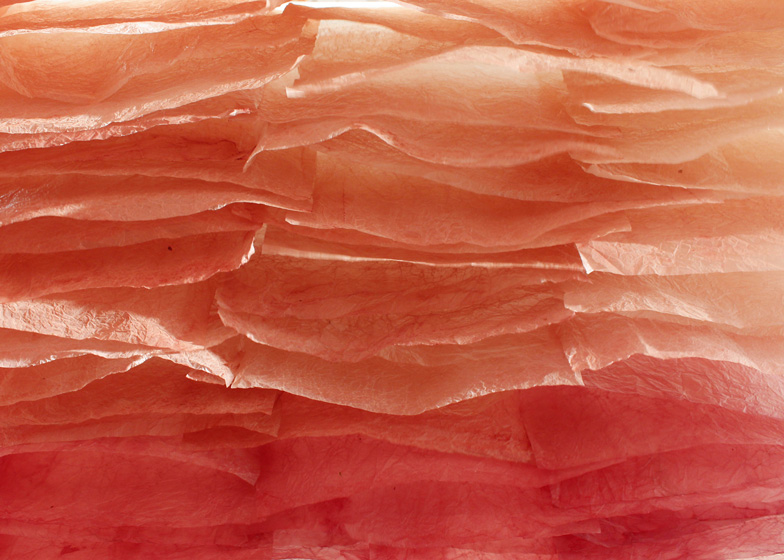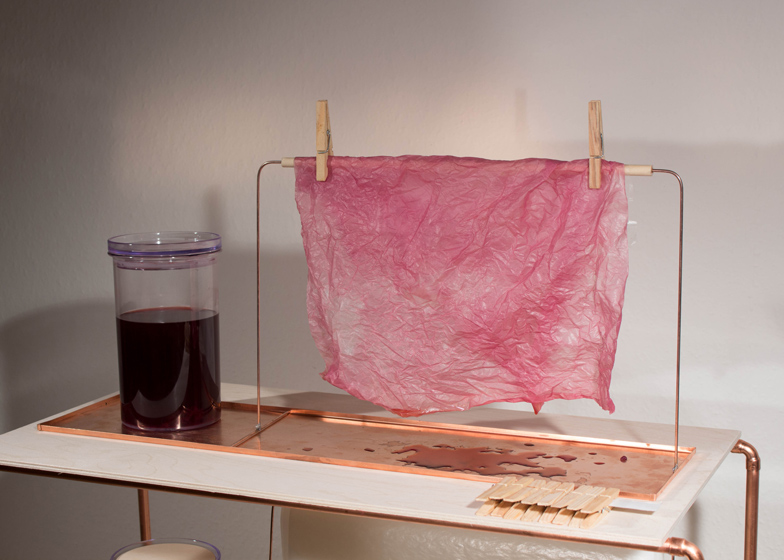Milan 2014: students from the Piet Zwart Institute created a series of interactive objects exploring sound in a domestic context for their Instruments Reimaging the Music Room exhibition in Milan last month (+ slideshow).
Taking the often unnoticed background noise of the home as a starting point, designers from the Master Interior Architecture and Retail Design (MIARD) program at the Piet Zwart Institute in the Netherlands created the exhibition, entitled Instruments Reimaging the Music Room, in the Ventura Lambrate district of Milan.
The exhibition explored the theme of incidental soundscapes and the role of music in the home. The result is a series of objects with both domestic functions and audio output.
Sonic f.lux by Marco Busani and Natalie Konopelski is a collection of pendant lights that contain a speaker and a layer of water.
The sound waves disturb the water as the light shines through it, casting moving shadows and distorted light around the room.
"The speaker inside produces sound waves that shape the surface of the water creating all these different patterns," Busani told Dezeen.
Users are encouraged to use their own playlists to create unique patterns.
"Our goal was to make the sound visible, so that's the reason for the light. It's possible to see the projection of the all the fluctuations in space around you," said Busani.
Obsessive Cleaners by Kleoniki Fotiadou and Bianca Yousef are made from plywood and brass and are a type of Friction Idiophone - a musical instrument defined by two materials rubbing together to create sound.
"Our collection of five mechanisms is designed to clean details of the house that are often neglected," said Fotiadou. "The project was inspired by the sounds created by the domestic ritual of cleaning and the repetitive frictions involved. The project refers to the humorous aspects of obsession."
The Auscultable by Iulia Circei and Sina Steiner incorporates a stethoscope, a type of membranophone – an instrument that uses a membrane to produce sound.
"The Auscultable is a device that makes the most intimate and hidden sound of the body audible, and that's the heartbeat," said Circei. "Four people sit at the table and they share an intimate moment by listening to each others' hearts. The stethoscopes are connected, so the users to hear each other's heartbeats, but they hear all the heartbeats at the same time, so it preserves the anonymity."
The table is made from a metal frame and the same plaster that is used for casting broken arms in hospitals.
"It showcases the fragility of life. Without the heart you wouldn't be alive. It's almost like we've cast the moment of sharing emotions at the table," Circei said.
Domestichordophone by Eglė Jacinavičiūtė and Savvas Laz is a type of chordophone, or stringed instrument, which has been fused with a wooden cabinet. "We put the features of a guitar into a cabinet to bring this element of sound into a domestic element," said Laz.
Each drawer in the stack has guitar picks attached to their outside edges, which strum the strings inside the cabinet body as they move. The strings can be tuned and each drawer plays a different note, so you can control the sounds you make and hear which drawer has been moved.
"Every time you open or close the drawers, you produce music. The idea was about a couple living together, but not getting along, so they had to find a way to communicate without any physical contact. We came up with a cabinet that covers the whole body, but still passes messages to the other side."
The Paperscape by Albina Aleksiunaite and Devika Mirawitani also started with an investigation into chordophones, but the designers interpreted this more laterally, by looking at washing lines strung up in domestic settings.
The duo created an awning from lines of string covered with sheets of dyed wax paper, which rustle in even the slightest breeze.
"It's a prototype for a sonic room to create a relaxing atmosphere. It produces sounds by the friction of the paper, like the sound of leaves," said Mirawitani. "It's made from wax paper coloured with the pigment from red onion skins. Because we were inspired by domestic laundry - how you wash you clothes and let them dry, we dipped the paper in water and then let it dry."
Piet Zwart Institute's Instruments Reimaging the Music Room appeared in Ventura Lambrate as part of Milan Design Week 2014.
The project followed the Fabrikaat exhibition of products for the garden from 2012 and Altered Appliances designs for the kitchen from 2013 to complete a trilogy that investigated making, materials, and application in a domestic setting.

